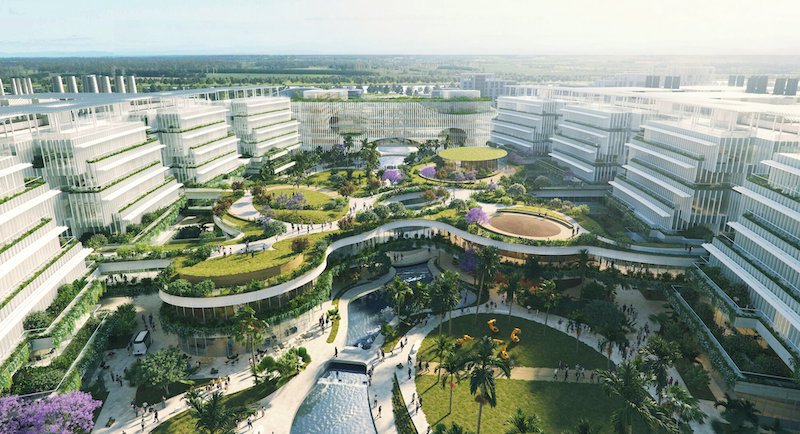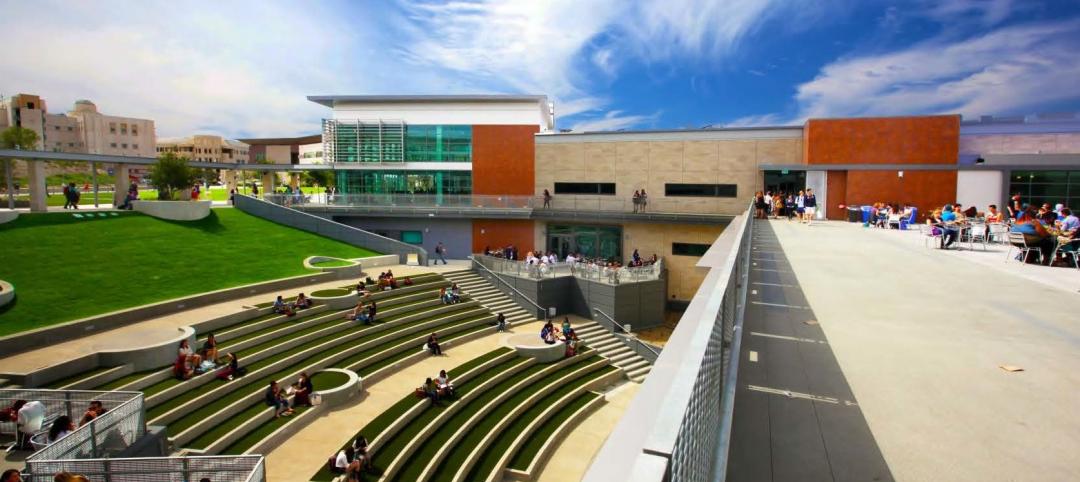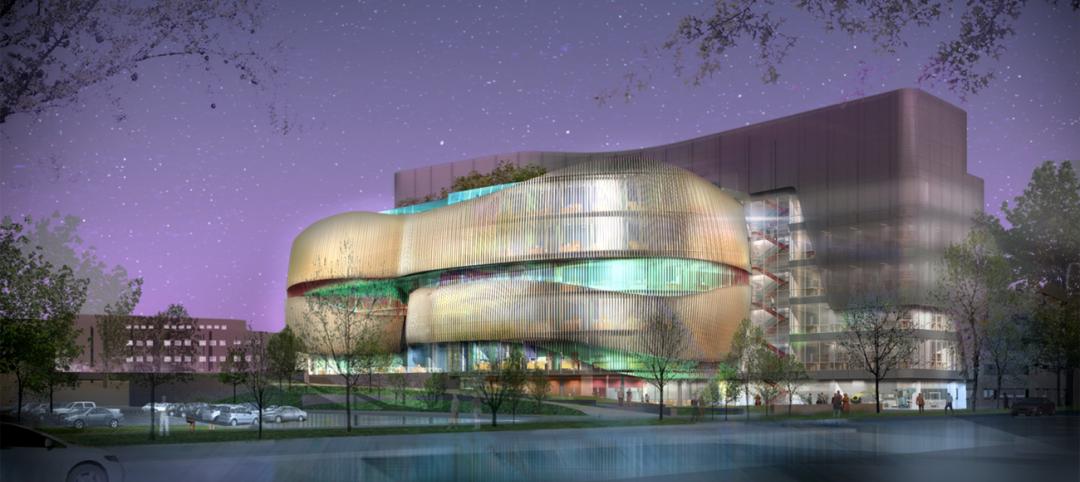Kohn Pedersen Fox (KPF) has recently unveiled the master plan of the Hong Kong University of Science and Technology (HKUST) campus.
The project, located in Nansha, Guangzhou will span 11.6 million sf and accommodate more than 10,000 students and faculty. Space for housing, teaching and research, athletics, performing arts, and amenities, as well as a 24-hour library and state-of-the-art laboratories, will also be included. All of the spaces and facilities will converge around a dynamic central space meant to foster interdisciplinary collaboration and create a strong community.
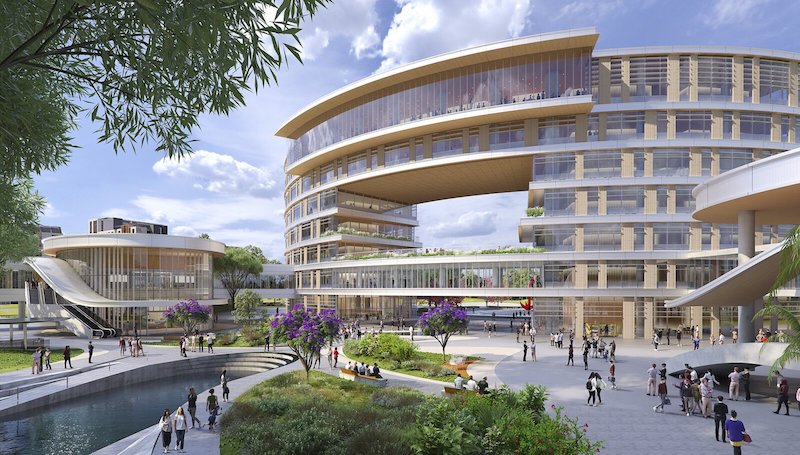
The design of the campus will combine HKUST’s programmatic aspirations with the site’s natural aesthetic, waterways, and urban context while targeting carbon neutrality and zero waste water. Three canals will embrace the delta and enforce the zero waste water goal, collecting and filtering rainwater for reuse and promoting resiliency through flooding and wetland protection. Within the canals’ borders, the campus will be free of emissions. A smart electric mobility network will support all transportation of resources and people.
The main outdoor collaboration areas and the buildings themselves will incorporate a combination of active and passive thermal comfort strategies to guarantee the well-being and enjoyment of occupants within the humid micro-climate of the site.
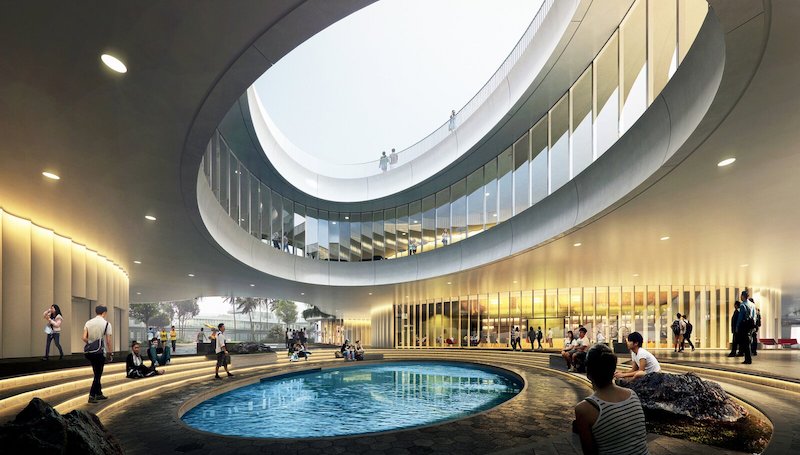
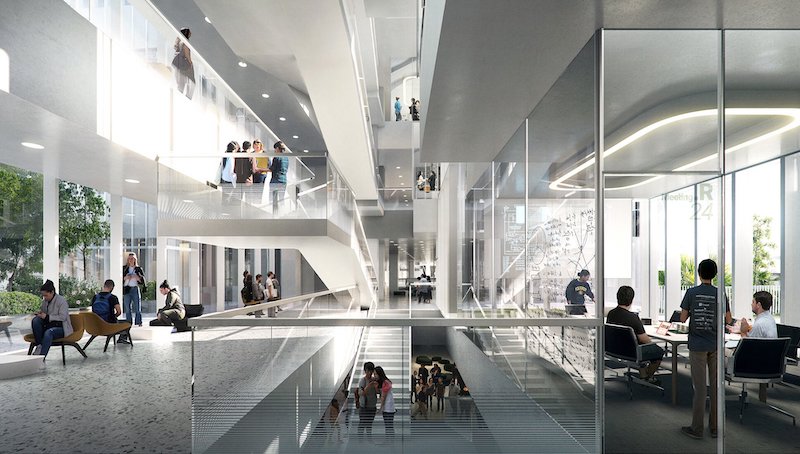
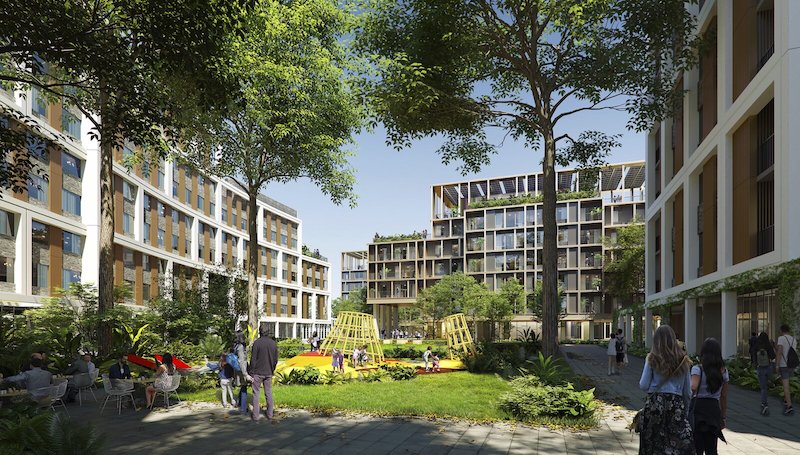
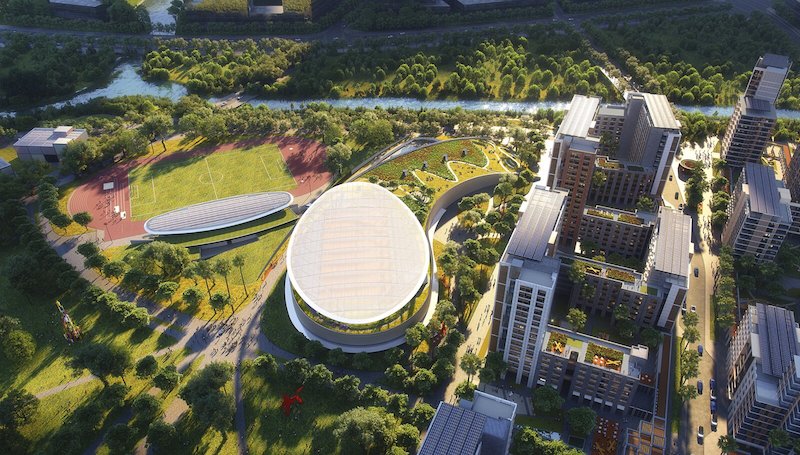
Related Stories
| May 10, 2014
How your firm can gain an edge on university projects
Top administrators from five major universities describe how they are optimizing value on capital expenditures, financing, and design trends—and how their AEC partners can better serve them and other academic clients.
| May 1, 2014
First look: Cal State San Marcos's posh student union complex
The new 89,000-sf University Student Union at CSUSM features a massive, open-air amphitheater, student activity center with a game lounge, rooftop garden and patio, and ballroom space.
| Apr 29, 2014
USGBC launches real-time green building data dashboard
The online data visualization resource highlights green building data for each state and Washington, D.C.
Smart Buildings | Apr 28, 2014
Cities Alive: Arup report examines latest trends in urban green spaces
From vertical farming to glowing trees (yes, glowing trees), Arup engineers imagine the future of green infrastructure in cities across the world.
| Apr 16, 2014
Upgrading windows: repair, refurbish, or retrofit [AIA course]
Building Teams must focus on a number of key decisions in order to arrive at the optimal solution: repair the windows in place, remove and refurbish them, or opt for full replacement.
| Apr 9, 2014
Steel decks: 11 tips for their proper use | BD+C
Building Teams have been using steel decks with proven success for 75 years. Building Design+Construction consulted with technical experts from the Steel Deck Institute and the deck manufacturing industry for their advice on how best to use steel decking.
| Apr 8, 2014
Science, engineering find common ground on the Northeastern University campus [slideshow]
The new Interdisciplinary Science and Engineering Building is designed to maximize potential of serendipitous meetings between researchers.
| Apr 2, 2014
8 tips for avoiding thermal bridges in window applications
Aligning thermal breaks and applying air barriers are among the top design and installation tricks recommended by building enclosure experts.
| Mar 26, 2014
Callison launches sustainable design tool with 84 proven strategies
Hybrid ventilation, nighttime cooling, and fuel cell technology are among the dozens of sustainable design techniques profiled by Callison on its new website, Matrix.Callison.com.
| Mar 20, 2014
Common EIFS failures, and how to prevent them
Poor workmanship, impact damage, building movement, and incompatible or unsound substrate are among the major culprits of EIFS problems.


